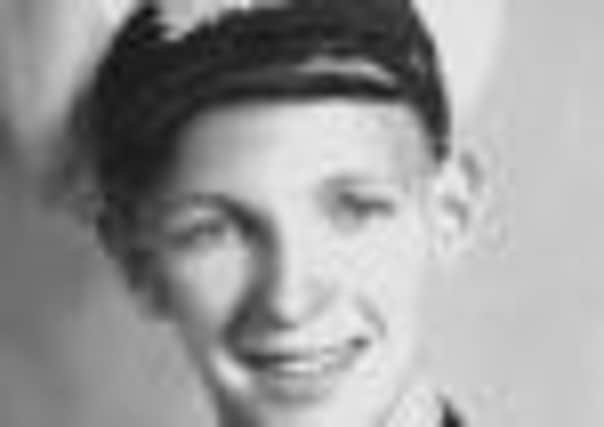Obituary: Cdr James Hume, RAN, naval officer who survived two sinkings and trained the fledgling Royal Malaysian Navy


James Hume was the son of a United Free Church minister and grew up in Scotland with an adoptive family. At the age of 13 he joined HMS Conway the Merchant Navy Training Ship in Liverpool harbour. By the time he graduated, the world was at war. His first ship was the SS Clan Chattan. On the third voyage, when they arrived in Durban, he was told by the captain of the loss of his entire family in the Blitz. He was not yet 17.
In 1942, the Clan Chattan was part of a convoy to Malta when she was hit by several bombs. James was involved in fighting the fires and was among the last to leave the ship. For his role in these extremely hazardous trips he was awarded the Memorial George Medal in 1994.
Advertisement
Hide AdAdvertisement
Hide AdHe then joined SS Dafila, a munitions supply ship, as Third Officer. She sailed between Alexandria and Tobruk, supplying the British Army in North Africa in the fight against Rommel.
During one of these runs, she was hit amidships by two torpedoes and exploded. A witness on another ship reported that “one minute it was there, and the next it was gone”. James was on the bridge and saw the torpedoes, but it was too late to do anything but watch them hit. He was one of only five survivors.
After hospitalisation in Alexandria, he joined SS Star of Alexandria, which was involved in secret work in the Indian Ocean.
He navigated the ship to Melbourne in Australia where, on arrival, he was called up from the Merchant Navy into the Royal Australian Navy.
This transfer needed the agreement of Group Captain Arthur Lawrence MC, FRSCE, his future father-in-law, who had given James a home to help with his recuperation and was now his next-of-kin. Lawrence had done his graduate medical training in Glasgow and Edinburgh after the war. James was later to marry his daughter Sue, and the two men became close friends.
Now a midshipman in the RAN, James joined HMAS Kanimbla, an armed merchant ship deployed as a troop carrier. Kanimbla was involved in amphibious landings throughout the Pacific campaign in New Guinea, through Borneo and into the Philippines – often under enemy fire and threat of attack by Kamikaze aircraft.
When the war ended, James required a year to recover from a shrapnel wound to his knee and then served in HMA Ships Hawksbury, Murchison and the flagship Australia.
In the early 1950s, he was involved in clearing wrecks and mines and maintaining lights in New Guinea waters. He served twice in Korea, in HMA Ships Australia and the carrier Sydney. He was then appointed in command of the minesweeper HMAS Wagga.
Advertisement
Hide AdAdvertisement
Hide AdFollowing three years as director of operations in Navy Office, he was posted as executive officer of the RAN Apprentice Training Establishment at HMAS Nirimba outside Sydney.
These were young men, aged between 16 and 18, many of whom had never left home. James had a reputation for being stern but fair and saw himself as a father figure. In later life, one said: “Jim Hume was the epitome and yardstick by which I judged all naval commanders.”
Between 1966 and 1968, James was loaned to the fledgling Royal Malaysian Navy. He was appointed as commanding officer of the main training base, KD Malaya in Singapore, and set about ensuring that administration and discipline were brought up to a satisfactory level.
His final appointment was in 1971 as defence attaché to South Korea, where he was the Australian representative on the Military Armistice Committee at Panmunjom. When he left this post, General Richard Stillwell, the US army commander said: “My colleagues and I have been constantly impressed by your competence, your diplomatic talents, your resourcefulness, and your unfailing co-operation.
“You have performed in the best traditions of the Royal Australian Navy and have represented your government in superb fashion.”
These comments sum up his life of service in uniform. He retired from the Royal Australian Navy in 1974 and spent the next 13 years as senior research officer for an Australian senator, covering the portfolios of territories, veteran’s affairs, industry technology and commerce, communications and transition to government.
There then involved a third career of community service, often as an office bearer.
He was actively involved in Rotary (from which he received the Paul Harris Award), The RSL (The Returned and Services League of Australia), and the PC Users Group. He supported fellow veterans as an advocate, hospital visitor and friend. At the age of 75, he received an international award for one of his PC Users reviews.
Advertisement
Hide AdAdvertisement
Hide AdJames Hume always considered himself a Scot and was proud of his heritage. He is survived by his wife of 60 years, Sue, four children and five grandchildren.
His elder son, Professor David Hume, returned to Scotland in 2007 as director of the Roslin Institute of the University of Edinburgh. The wheel had turned full circle.
JONATHAN BRETT YOUNG